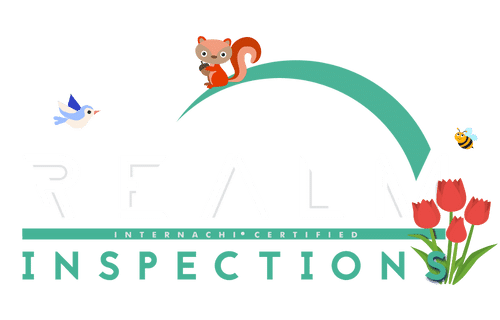Unveiling Radon: History in Homes, Safety, and Value
Radon: A Silent Threat in Your Home
In the world of buying and selling homes, there’s a hidden danger that can impact your health and home’s value: radon. At Realm Inspections, we make sure to uncover this danger during the home inspection process.
A Brief History of Radon
Radon, a radioactive gas, was discovered in 1899 by Ernest Rutherford, a physicist from New Zealand. It wasn’t until the mid-20th century that researchers began to understand its potential health risks. Radon is produced from the natural decay of uranium, which is found in varying concentrations in soil and rock. When radon enters a home through cracks and gaps in the foundation, it can accumulate to dangerous levels.
How Radon Was Discovered in Homes
There’s a story online about Stanley Waltras triggering radiation detectors at a power plant in Pennsylvania. This incident did happen in 1984, but it didn’t discover radon in homes. Radon was already known to be a health risk before this event.
- Discovery of Radon: Radon’s risks were studied long before 1984, though it gained attention after incidents like Stanley Watras’.
- Stanley Watras Incident: Stanley Watras didn’t discover radon in homes. His incident highlighted how radon can seep into homes from the ground.
- EPA and Mitigation: The EPA did investigate and found radon in Watras’ home. This led to better sealing methods for homes.
- Radon Levels in Homes: Homes in places like Colorado can have high radon levels due to local rocks. But saying half of Colorado homes have high levels needs accurate data.
- Community Actions: Programs like free radon testing kits help people check and fix radon problems.
While these stories help raise awareness about radon, it’s important to get accurate facts. Radon can be a serious health risk, but it’s manageable with testing and fixes.
Radon’s Impact on the Real Estate Market
More home buyers now prioritize radon testing before purchasing a home. Radon, a radioactive gas from soil and rock, can seep into any type of foundation. Whether your home has a basement, crawlspace, or is built on a slab, if radon is present in the soil beneath your house, it can infiltrate your home’s living spaces. Homes with high radon levels may face challenges in selling, potentially affecting their sale price. Conversely, homes with low radon levels are often more attractive to buyers concerned about health and safety. It’s important to note that radon levels can change over time due to various factors, so regular testing is recommended to ensure ongoing safety and to take necessary mitigation steps if levels rise.
Why Choose Realm Inspections for Radon Testing?
At Realm Inspections, we specialize in thorough radon testing during home inspections. Our experts use the latest Constant Radon Monitor (CRM) devices to measure radon levels accurately. Testing during a home inspection gives you peace of mind about your home’s air quality. See more here.
The Benefits of Radon Testing
- Health Protection: Radon is a leading cause of lung cancer after smoking. Testing helps you keep your family safe.
- Property Value: Knowing your radon levels helps in negotiations and prevents future costly fixes.
- Peace of Mind: A radon test from Realm Inspections ensures your home is a safe place for your loved ones.
Learn more about radon and new construction in our related blog post here.
At Realm Inspections, we’re committed to keeping you informed and your home safe. Contact us today to schedule your comprehensive home inspection and radon testing. Your family’s health and peace of mind are our top priorities.
Remember, when it comes to radon, knowledge is power. Let Realm Inspections help you make an informed decision about your home’s air quality.
Want to know if Realm can help you? Check out our Google Business page to learn about our service area and more!

It explains how radon history can affect a property’s safety and value, urging homeowners to take necessary steps to test and mitigate radon levels. Thanks for sharing!
Radon is something a lot of homeowners overlook, but it’s so important to be proactive about it. I’ve heard great things about Realm Inspections, and it’s reassuring to see a company that prioritizes both home safety and family health. , I’ll definitely be checking out your Google Business page to learn more about your service area—sounds like a valuable resource!